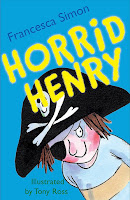WHAT ARE THE INTEGRATED SKILLS?
The language skills are LISTENING, SPEAKING, READING and WRITING. These four skills can be divided into two groups:
- “RECEPTIVE” OR “PASSIVE” SKILLS: reading and listening, for the students are receiving the input. However, there is controversy regarding naming them “passive” since there needs to be an active reading or listening in order to fully understand the information. Humans are not passive subjects in the processes of acquiring information because they are not simply receiving it, they also process it.
- “PRODUCTIVE” OR “ACTIVE” SKILLS: writing and speaking, as the students create products through their imagination and creativity.
Traditionally speaking, receptive skills support productive skills: the students first receive an input that helps them understand vocabulary or structures and this “inspires” them in their production. Usually, receptive skills are used so as to teach the new contents, and productive skills as a form of assessment to check if the contents have been understood.
HOW DO WE TEACH LANGUAGE SKILLS?
The most extended and traditional methodology of English teaching advocates for working on the four skills separately. However, in the real world situations that students will face (jobs, travelling, etc.), the four skills appeared combined, not isolated. Henceforth, they should be taught integrated too, so the learning process resembles the contexts that students will find outside the classroom.
WORKING ON THE 4 SKILLS THROUGH MATILDA
We all know the beloved Roald Dahl novel Matilda and all the pop culture adaptations that came after it. Along with my classmates Sara Sánchez Pinto and Laura Sanjuán, we outlined a project based on this story that could be used to work on the 4 skills (reading, listening, speaking and writing). The activities would be aimed to a class of 6th grade of Primary (11-12 years old).
STEP 1: READING. The project would begin with the reading of the book Matilda by Roald Dahl. Given that reading aloud has been extensively proven to be as beneficial for students (social nature of learning, more consciousness of the information, etc.) (Luri, 2019) as silent reading, there would be a combination of both. Some chapters would be read in class, and some at home.
STEP 2: SPEAKING. It would actually be simultaneous with step 1, as after the reading of each chapter or group of chapters, there would be class discussions about the topics of that chapter, the character development, etc.
STEP 3: WRITING. After finishing the book, the students are divided in groups and asked to write a report about the book. This report is guided with questions made by the teacher and “forces” students to use a wide variety of vocabulary but also grammatical structures and writing techniques (an objective summary, a subjective opinion…).
STEP 4: LISTENING/WATCHING. When the part of the unit destined to the original source is done, the students will watch the movie “Matilda” and listen to the song “Matilda” by Harry Styles. It might inspire some students to go watch the musical “Matilda” too.
STEP 5: SPEAKING. In the already created groups, the students will discuss the faithfulness of the adaptations to the original source, what might have inspired the artists to create those new pieces, what does it mean that the impact of the novel lasts over time…
As mentioned above, this is simply an outline of the project, and in case of being taken to class, it would need of specifications regarding objectives, contents, methodology, timing and resources.
REFLECTION
This is the first year that I have been taught about integrated skills, and I find it curious that no one had ever mentioned this approach before. It has been really interesting to realise that teaching language skills integratedly is the best way to bring the classroom environment and the actual communicative environment together. The more similarities between instruction and real life we provide students with, the easier and more useful it will be for them. It makes sense to combine all of them in the classroom activities because when they go out to the world, they will have to use the language that way, not isolating the different skills.
Furthermore all the skills support each other. For example, the more a student reads, the more knowledge they obtain to then write (vocabulary, structures, etc.) If this is a widely accepted idea regarding reading and writing in the first language, why not the foreign one too? The more students develop each skill, the more the others will benefit from it.
I have enjoyed designing an activity that combined all the skills and pushing myself and my group-mates to come up with creative ideas to follow this approach. It has been very rewarding.
Resources
Luri, G. (2019). Sobre el arte de leer 10 tesis: sobre la educación y la lectura. Plataforma Editorial.







Comentarios
Publicar un comentario